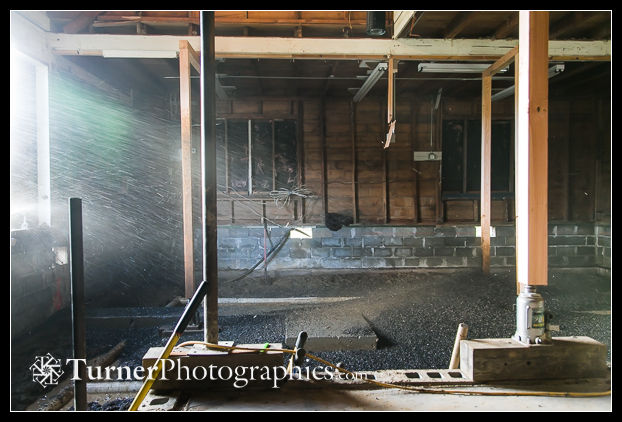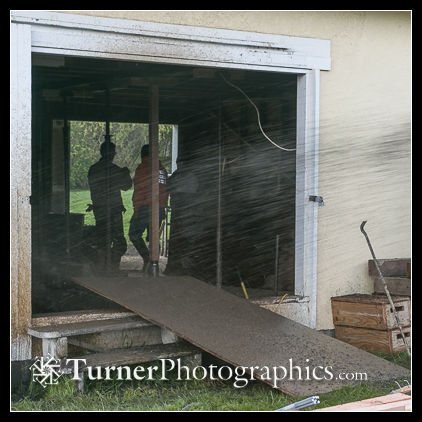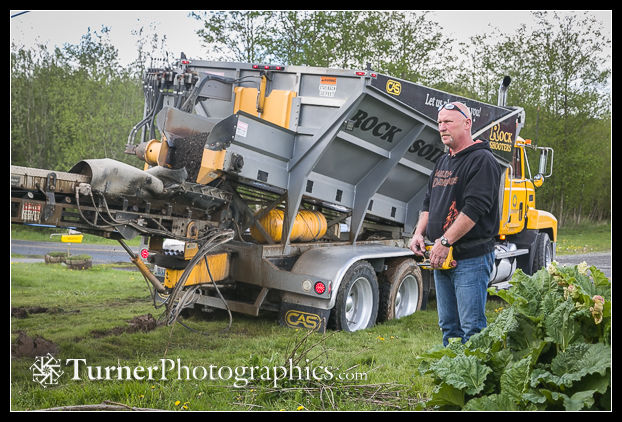A Dry Crawl Space

Saturday, April 26
Yesterday morning it rained pea gravel into the crawl space of our new studio. I was working in my office upstairs when I heard the sound of a big truck pulling up out front. I looked out the window to see a guy maneuvering a long conveyor belt toward the barn door on the front of the building. In a few minutes he powered up the conveyor and gravel started shooting toward the open door. When the truck pulled up I thought they were going to deliver the gravel slowly into a pile in the crawl space. But no, it was a remarkably well controlled high speed operation. In the photo above you can see the gravel raining down into the space.

Having a big barn door on the front of the building made it immensely easier to get the gravel into the crawl space. It took about 10 minutes to deliver enough gravel to cover the footprint of the building more than 6 inches deep. One of the crew told me it would have taken about five hours, and a lot of muscle, to do the same job with wheelbarrows. They buried perforated pipe drain lines which will lead out the side of the building to a French drain along the low side of our property.

The guy controlling the rock shooter truck had a big wireless remote control on his belt so he could move around and see what was going on. I wonder what the learning curve is for operating that thing? It was obvious he’d done this a bunch of times before. You could do a lot of damage with it if you got the aim wrong.

The final step was to spread and level the gravel the old fashioned way — with shovels and rakes. We’ve looked up vacuum reviews and found ideal portable shop vacs for the job. Once the crew finishes building the supports for the floor joists they’ll put down a layer of thick plastic and we’ll have a clean, dry crawl space under the studio, with a trap door in the closet for access.
I’m not a big fan of crawl spaces in general and really don’t like working in them. This one is going to be downright luxurious as crawl spaces go. All this prep work is really to prepare the underpinnings of the floor and walls for a long, dry, solid life. The building was originally built in 1928 and put on its current foundation in the early 1960s. It should last another hundred years.

